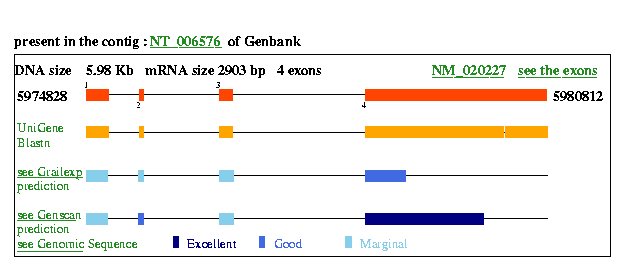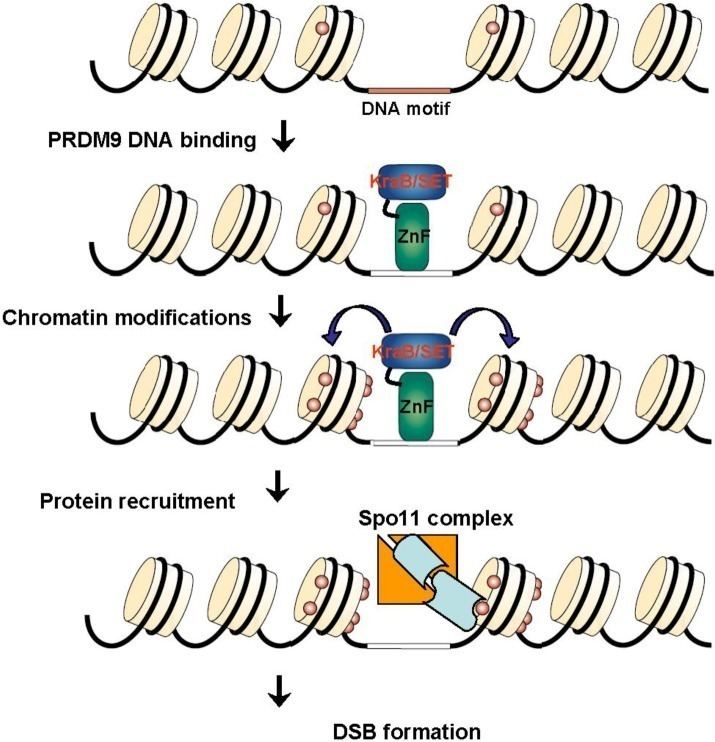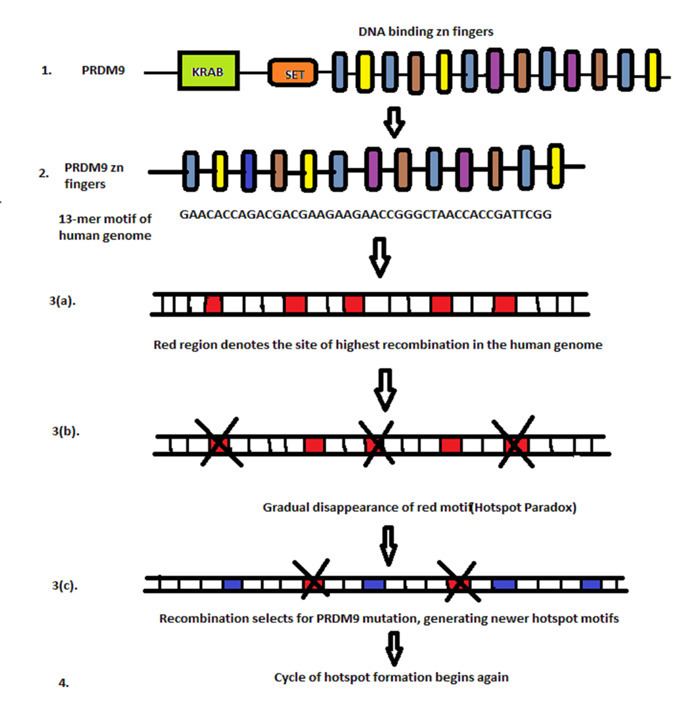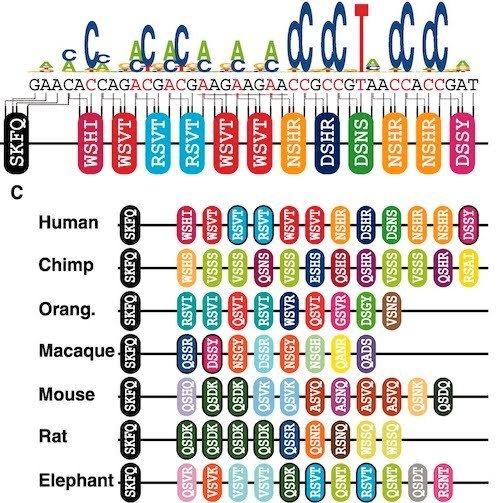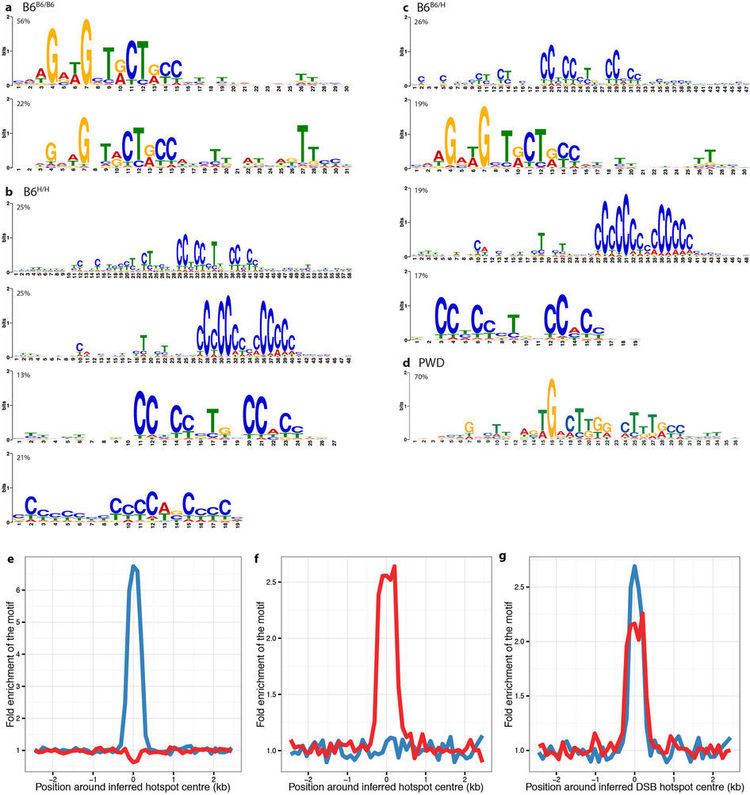Entrez 56979 | Ensembl ENSG00000164256 | |
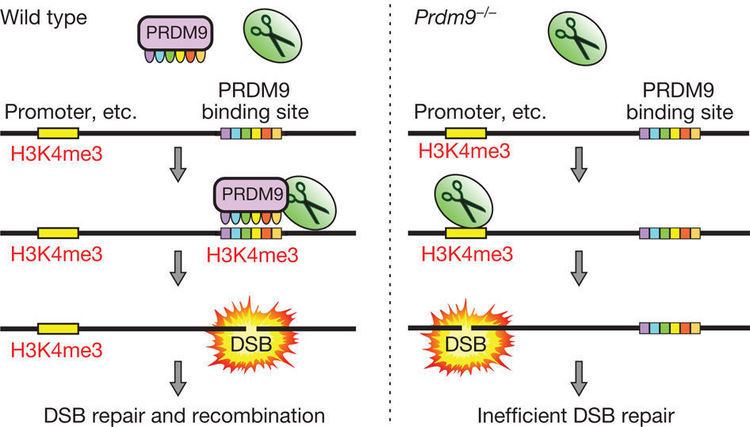 | ||
Aliases PRDM9, MEISETZ, MSBP3, PFM6, PRMD9, ZNF899, PR domain 9 External IDs MGI: 2384854 HomoloGene: 104139 GeneCards: PRDM9 | ||
Gene music using protein sequence of prdm9 pr domain containing 9
PR domain zinc finger protein 9 is a protein that in humans is encoded by the Prdm9 gene. The protein has histone H3K4 trimethyltransferase activity, a KRAB domain, and a DNA-binding domain consisting of multiple tandem C2H2 zinc finger (ZF) domains. PRDM9 specifically trimethylates lysine 4 of histone H3 during meiotic prophase and is essential for proper meiotic progression, but does not have the ability to mono- and dimethylate lysine 4 of histone H3. H3K4 methylation represents a specific tag for epigenetic transcriptional activation which plays a central role in the transcriptional activation of genes during early meiotic prophase.
Contents
- Gene music using protein sequence of prdm9 pr domain containing 9
- Function
- Recombination hotspots
- References
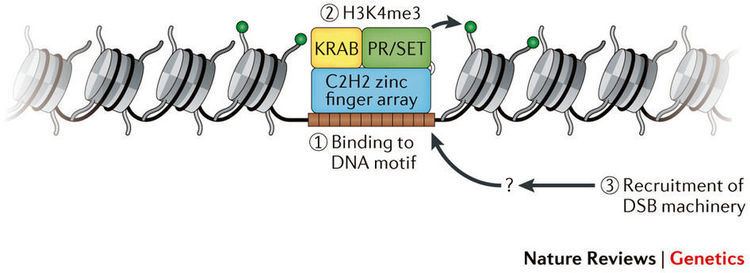
Function
PRDM9 is thought to mediate the process of meiotic homologous recombination.
Recombination hotspots
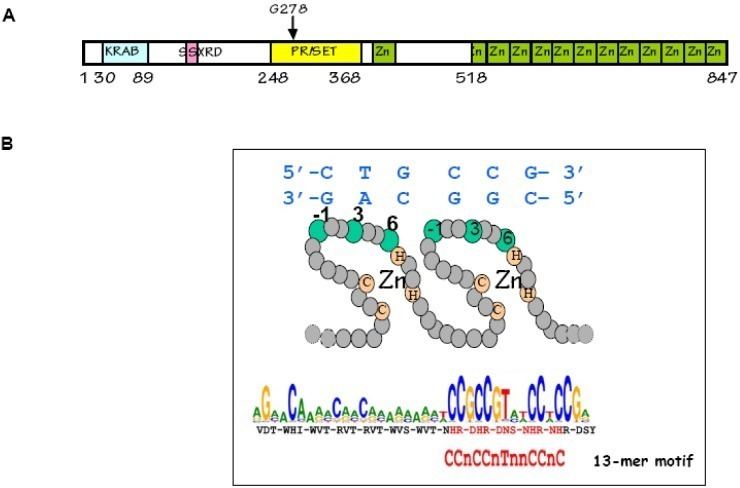
In humans and mice, recombination occurs at elevated rates at particular sites along the chromosomes called recombination hotspots. Hotspots are regions of DNA about 1-2kb in length. There are approximately 30,000 to 50,000 hotspots within the human genome corresponding to one for every 50-100kb DNA on average. In humans, the average number of crossover recombination events per hotspot is one per 1,300 meioses, and the most extreme hotspot has a crossover frequency of one per 110 meioses. These hotspots are predicted binding sites for PRDM9 protein.
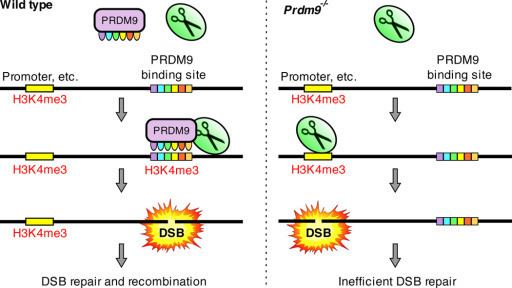
PRDM9 is a meiosis specific histone methyltransferase and, upon binding to DNA, it catalyzes trimethylation of histone H3 at lysine 4. As a result, local nucleosomes are reorganized. This reorganization is apparently associated with increased probability of recombination.
